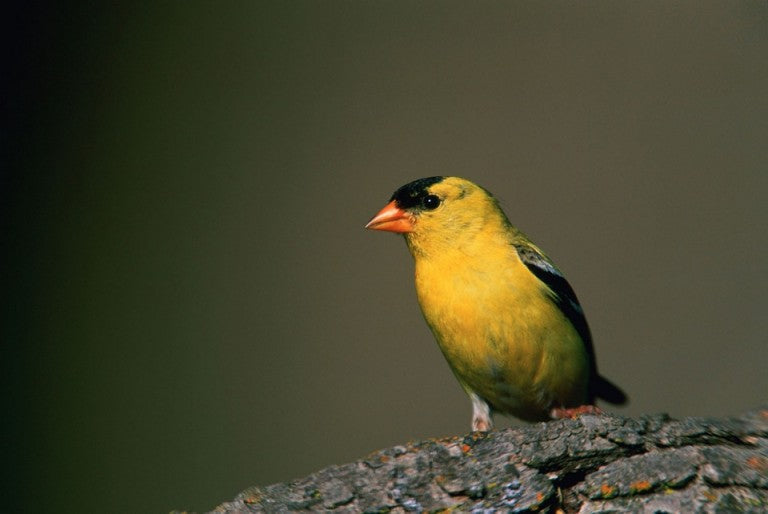Offer
Provide additional details about the offer you're running.
Provide additional details about the offer you're running.
Provide additional details about the offer you're running.

The spring is finally upon us, and with the arrival of this season, our ears are treated to the vocalization of some of our favorite birds, singing their wonderful spring songs.
Here are 5 birds to keep an ear out for this spring; these birds are both visually and audibly pleasing.
In the spring, the male American Goldfinch sports a vivid yellow and black plumage with a little bit of white thrown in, while the females are slightly less flashy this time of year, but are still quite identifiable. This time of year, males are doing most of the singing, belting out a variety of twitters and warbles in no typically discerning order. Known as one of the latest nesting birds, they will wait until natural plants, trees, and grasses have ripened before nesting. Typically in late July, August and into September.
Listen For: The males will make a courtship call in the spring when landing near a female, sounding like a “tee yee” followed by a melodic song.
Tip For Attracting: As far as feeders go, the American Goldfinch is not particularly hard to please. They will feed on a variety of feeders and don’t mind being flung around in the wind. Known as a vegetarian, the Goldfinch loves seeds from various weeds, grasses, cedars, sunflowers and more. Having a good Nyjer seed feeder that is easy to clean, will keep you seed fresh and will help to bring higher numbers of birds to your feeder.
One of the most sought-after birds for backyard birders, their songs are almost as pleasing as their beautiful red plumage. Because the Cardinal does not migrate, they never molt into a dull plumage, remaining breathtaking year round.
Listen For: Singing in 2-3 second intervals, both the male and female cardinal break out into spring songs. The Cardinal’s song is a loud and clearly broadcasted harmony, sounding a bit like “cheer, cheer, cheer”. Although males will sing throughout the year, the spring is really peak season to hear the Northern Cardinal singing their favorite tunes.
Tip For Attracting: As traditional ground-feeding birds, Cardinals need a good steady feeding surface, black oil sunflower seeds, steel-cut corn, and a good bird bath to keep these beautiful birds happy in your backyard. Read more tips here!

The quintessential bird of spring. Typically, sighting a Robin is a sure sign that spring has arrived in your area. Their orange breast makes them an easily identifiable bird, often seen digging earthworms out of your lawn.
Listen For: The string of about 10 whistles is almost as familiar a song as is the sight of this bird in the spring. Often deciphered sounding like two “cheerily, cheer up, cheer up” phrases in succession, with this song taking on a more rapid pace in the dawn hours.
Tips for Attracting: No tips really needed here. So long as you don’t live under a rock, you should have no problem identifying both the physical and audible appearance of these sultans of spring.

A wonderful bird to have your sights on when looking through your binoculars or spotting scope; the Bluebird boasts a stunning royal blue plumage on its head and back with a burnt-brown colored chest. Look up; you can often find this bird perched high on power lines, wires and posts scanning the ground for their next snack.
Listen For: Often males will sing their songs while in flight or atop a perch in their pursuit of a mate in the spring. Their song lasts around 2 seconds and is a low pitched warbling type of note, often combined with some harsher chattering type of notes thrown in from time to time.
Tips for attracting: You won’t often find these blue beauties in and or around your feeders, as they are bug eaters. We carry a selection of dried mealworms and feeders specially designed for the Bluebird. Combine this meal plan with a proper nesting box and your chances of hosting a family of Bluebirds will increase. Place your nesting box on a fence post anywhere from 4-6 feet in the air, and make sure they have a clear flight path. Do your best to keep other birds from nesting, if it’s bluebirds that you are after, by keeping the nesting box clear of nesting material and mold. As your new found family of bluebirds grows, you might also want to consider adding additional nesting boxes to house the new family members.

A larger sized bird, the purple martin male bird sports an iridescent purple & blue coloring, while the females show a duller coloring, and some grey color on their heads and chest. Look for these acrobatic birds swooping and gliding through the air as they indulge on flying insects.
Listen For: A throaty “croak” sounding song from the male purple martin can be heard when a female is in the vicinity, often from a nesting cavity. The loudest song the purple martin will sing is their dawn song, typically before daylight to attract other martins to their nest site.
Tips for attracting: A purple martin house is the best way to get an intimate look at this colonial birds and putting out crushed eggshells for them will aid them in digesting their insect skeletons. Place the house in an open space, preferably near water and around 10-20 feet high. Purple Martins are extremely dependent on humans for their nesting sites, so if you do decide to create a Purple Martin nesting box, do your very best to keep other species away while allowing the Martins to claim their spot.

High Quality Blend